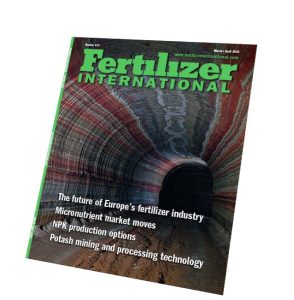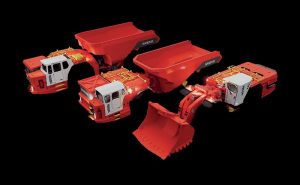Fertilizer International Index 2022
A complete listing of all articles and news items that appeared in Fertilizer International during 2022
A complete listing of all articles and news items that appeared in Fertilizer International during 2022

Mining major Anglo American is to invest up to $4 billion to complete its Wood-smith mine project in the UK.

2022 was another very good year for Nutrien, the world’s largest crop nutrient company. The Canadian-headquartered fertilizer giant produces around 27 million tonnes of potash, nitrogen and phosphate products annually from operations and investments in 14 countries, distributing these to agricultural, industrial and feed customers across the globe. Its agriculture retail business, Nutrien Ag Solutions, also serves more than 500,000 farmers worldwide.

Swiss-headquartered sulphuric acid trading company ChemTrans Trading AG has announced the passing of its founder Bo Levander. In a statement on behalf of the family and company, Bo’s son Henrik Levander said:

More than 1,000 delegates from 500 companies and 60 countries gathered at the Sheraton Grand Rio Hotel & Resort, Rio de Janeiro, Brazil, 29 January – 1 February, for the 2023 Fertilizer Latino Americano (FLA) conference. The event was hosted by CRU in collaboration with Argus. With attendance at record levels this year, we present selected highlights from this year’s four-day FLA event.

Micronutrient products are one the fertilizer industry’s fastest growing segments. In response, ICL, Koch Agronomic Services, Levity Crop Science, Omex and SQM have all strengthened their micronutrient portfolios.

Market Insight courtesy of Argus Media. Urea: Prices fell in most global markets in early March as suppliers chased limited demand. Although India’s purchase tender has yet to formally conclude, IPL looks set to book 1.15 million tonnes of urea at $330-334.8/t cfr, with traders mainly sourcing from Russian and Middle Eastern producers.

Blended and compound NPK fertilizers are a mainstay of many markets globally. We review the main production technology options.

Russia’s invasion of Ukraine has hit European fertilizer producers hard. Ammonia plants across the continent have been inactive over the winter due to prohibitively high feedstock costs. The future of nitrogen fertilizer production in the region will depend on access to an affordable, secure and sustainable energy supply and the switchover to low-carbon technologies.

Potash production improvements are being made in areas such as ore extraction, cooling and froth flotation. We review technological developments from Sandvik, Eriez, Nouryon and Solex Thermal Science.